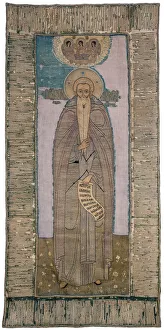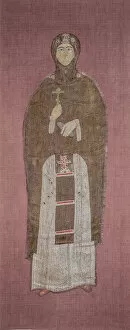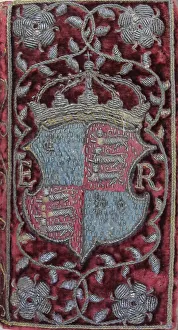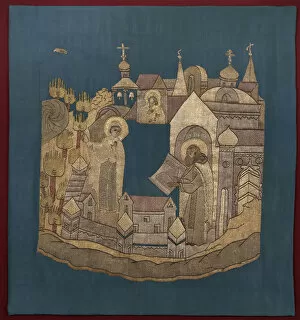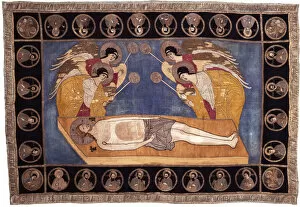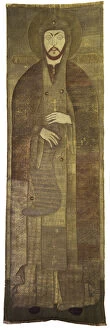Gold And Silver Threads Collection
"Unraveling the Rich Tapestry: Gold and Silver Threads in Historical Artworks" Step back in time to the end of the 16th century
All Professionally Made to Order for Quick Shipping
"Unraveling the Rich Tapestry: Gold and Silver Threads in Historical Artworks" Step back in time to the end of the 16th century, where an anonymous master weaves dragon silk brocade fabric adorned with intricate gold and silver threads. This masterpiece showcases the skill and artistry of ancient craftsmen. In another corner of history, Cosimo Tura, an Italian artist from the late 15th century, creates a stunning Altar Frontal with the Lamentation. Among its many details are delicate gold and silver threads that bring life to this religious scene. Moving forward through time, we encounter Venerable Cosmas of Yakhroma's portrait from the late 16th century. The golden threads adorning his robe symbolize his spiritual enlightenment and devotion. Saint Euphrosyne of Suzdal also graces our narrative with her presence. Her embroidered attire from 1526-1542 features shimmering silver threads that reflect her saintly aura. The Enlightener Theodore, bishop of Rostov and Suzdal in 1581, is depicted wearing vestments embellished with precious gold threadwork. These intricate designs pay homage to his significant role as a spiritual leader. An anonymous master leaves their mark on John Udall's Sermons binding from 1596 by creating an exquisite velvet cover adorned with Elizabeth I's coat of arms using opulent gold embroidery. West European Applied Art takes center stage in a textile piece dating back to the 16th century. Its golden motifs tell stories untold but preserved within these glistening strands for centuries. The Workshop of Constantinople crafts a magnificent Mitre in 1715 featuring elaborate patterns created by intertwining golden and silver threads—a testament to their mastery over this ancient craft. A glimpse into Palm Sunday Procession in Moscow on April 8, 1498 reveals Zoe Palaiologina accompanied by Ivan III amidst daughters draped in garments adorned with shimmering gold and silver threads.




